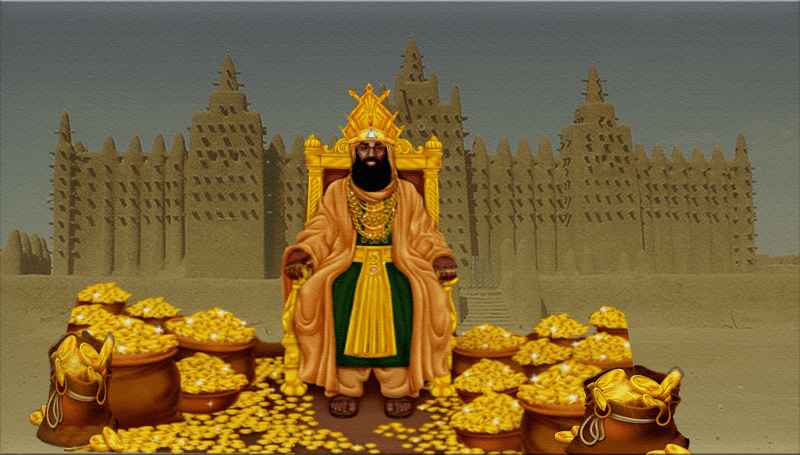Some of the richest men in the world today are tech billionaires and business leaders from the West and China. However, the title of “richest man who ever lived” goes to a little-known ancient ruler from a part of the world that is more often associated with poverty than with unimaginable wealth.
Mansa Musa was the king of the large Mali Empire in 1312. He took the throne when his predecessor, Abu-Bakr 11, who Mansa Musa had been a deputy for, went missing while looking for the edge of the Atlantic Ocean.
Musa took over as leader during a hard time when European countries were being destroyed by never-ending civil wars and a lack of resources. The Mali Empire, on the other hand, was thriving because it had a lot of gold and salt and other natural resources.
Under this leader, the empire grew to cover a large part of West Africa, from the Atlantic coast to Timbuktu, a trading center in the middle of the country, and even some parts of the Sahara. Just like the area he controlled grew, so did his money and wealth.
The rest of the world didn’t fully understand how much wealth King Musa controlled in his land until 1324. Musa was a religious Muslim who lived in a kingdom where most of the people were also Muslims. He went on pilgrimage to Mecca, but he didn’t go alone.
Musa went to the Holy Land with a caravan of tens of thousands of soldiers, slaves, and heralds. They were all dressed in expensive Persian silk and carried golden staffs. Even though there is a lot of disagreement about how many people were in his group, the convoy that went with him was a big deal. It included camels and horses carrying hundreds of pounds of gold.
This show of wealth caught the attention of the people who lived in the areas he traveled through, since such a large caravan would be hard to miss. When he went through Egypt, he had an effect on the people that would last for more than a decade.
When he got to Cairo, the capital of Egypt, and was forced to meet with al-Malik al-Nusar, the ruler of Cairo, his true character was shown. Ancient historian Shihab al-detailed Umari’s writings say that Musa was met in Cairo by a junior official of al-Nasir, who invited him to meet with other royals. Musa turned down the offer, saying he was just on his way to the holy land to make a pilgrimage.
His reason became clear as time went on. He didn’t want to see the sultan because he would have to kiss the ground and the sultan’s hand. After much doubt and persuasion, he finally agreed to the meeting.
During the meeting, Musa still wouldn’t kiss the sultan’s feet, and things didn’t go well until he gave in to tradition and kissed the sultan’s feet. But because he was in Egypt, he shared his huge wealth with the people who lived there. He also bought from local traders and gave them gold in exchange.
Then, news of Musa’s wealth spread to all parts of the world, not just in Africa. Even after he had died, which was between 1332 and 1337. By the end of the 14th century, Musa was shown on the Catalan Atlas of 1375, which was an important tool for sailors in medieval Europe. Abraham Cresques, a famous Spanish cartographer, made the atlas. In it, Musa was shown sitting on a golden throne with a golden sceptre, crown, and gold nugget in his hand.
From the huge amount of natural resources he controlled to the growth and development of the communities he left behind, Musa was a true legend whose wealth dwarfs that of today’s billionaires. Even by today’s standards, it’s hard to say what his wealth was like.
 The African History Truly African
The African History Truly African

